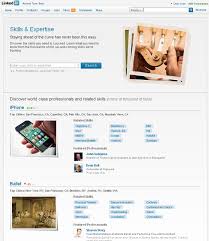
If we know someone’s name, company, and email format(s) used at the company, chances are that we could construct that business email address. Here are some ways to figure out the email format(s) specific companies are using.
1. Collections of Formats
Online collections of corporate email formats have been shared across our groups. I will list some of them here; please feel free to suggest other sites in the comments. Of course this information needs to be verified.
There is a collection of email formats, phone numbers, and more for the Fortune 1000 companies that I ran across, that can be found by Googling. Here is the file; I am not sure how precise the info is but this may be a good start.
2. Googling for Examples
When I search for a company email pattern, I pretty much never look them up in the sources like the above. I find it easier to do a few Google searches like this:
“email OR contact me at * bankofamerica.com”
“email OR contact me at * autodesk.com”
Here is a variation of this “Googling” method, using X-Raying LinkedIn. I am omitting “me“, compared to the searches above, since I expect to mostly see emails for people (vs. “info” “sales” “support” etc.) on LinkedIn profiles:
linkedin.com “people you know” “email * * apple.com”
linkedin.com “people you know” “email * * sap.com”
Please note that Google is still behaves pretty badly with Captcahs. If you do advanced searching using X-raying and asterisks, you may want to switch to a custom search engine I have created for this purpose. It is available here on the blog, or use its public URL.
3. Guessing and Verifying
Check the post from 2013:
Find Almost Anybody’s Email Address with #LinkedIn
4. Use This Custom Search Engine – Reveal Email Formats
This Custom Engine is based on a well-known site Zoominfo, that contains contact information, found on the Internet. To use the search engine, enter a company domain name, as an example, chevron.com, into the search box, and see what happens.
You can use its public link or just search below:
Reveal Email Formats
Here are some cool examples of its usage (Scroll down on each of these pages to see the results):




 As a Dice subscriber, I couldn’t miss the note from Dice CEO
As a Dice subscriber, I couldn’t miss the note from Dice CEO 



 When Google feels like our queries are too complex and suspects that they are sent by a robot, it throws a captcha (a squiggly word with a box below it). This supposedly protects Google from being misused by non-humans, i.e. computer programs, that may find and scrape too much information too quickly.
When Google feels like our queries are too complex and suspects that they are sent by a robot, it throws a captcha (a squiggly word with a box below it). This supposedly protects Google from being misused by non-humans, i.e. computer programs, that may find and scrape too much information too quickly.













